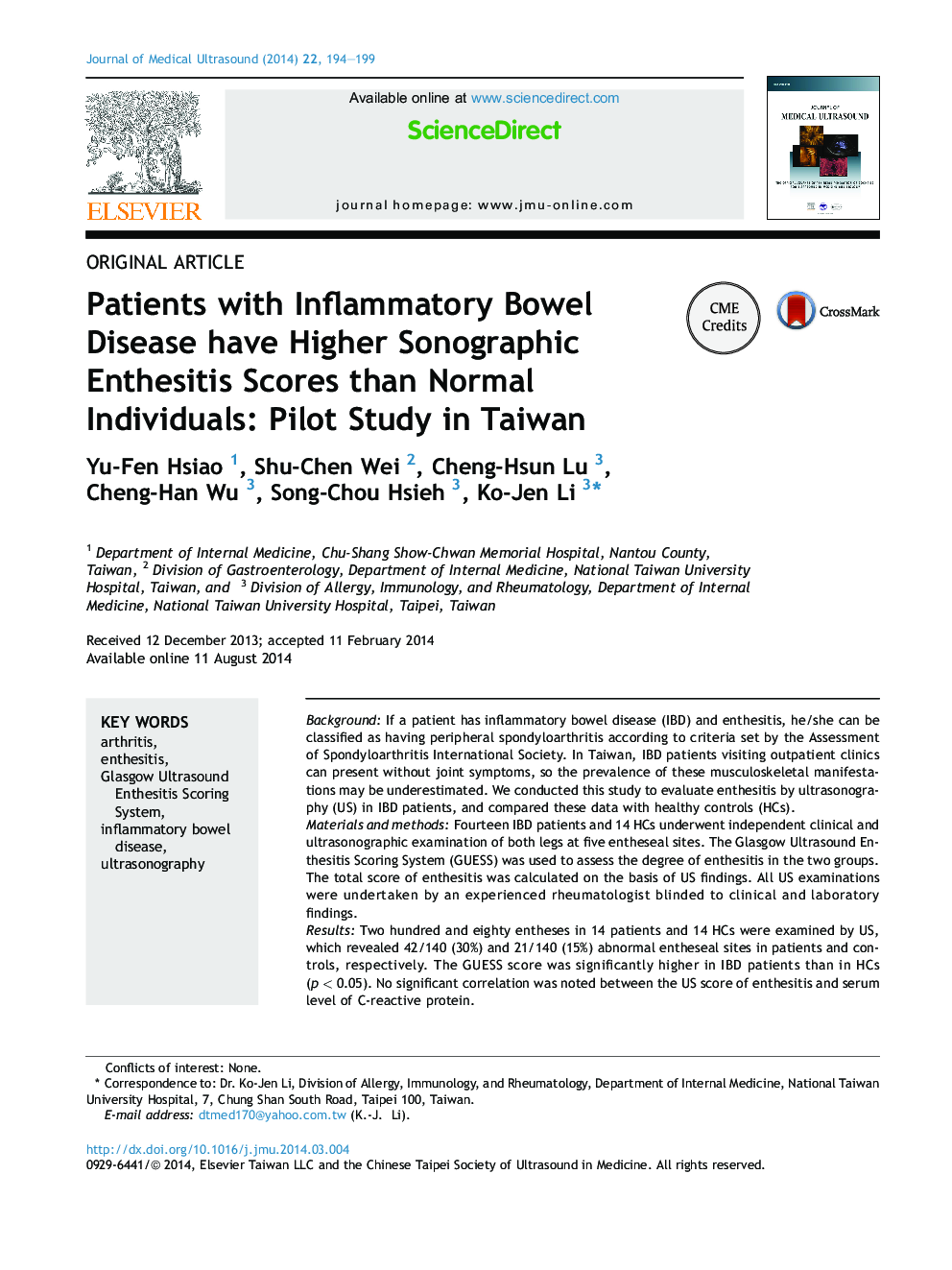| Article ID | Journal | Published Year | Pages | File Type |
|---|---|---|---|---|
| 4233071 | Journal of Medical Ultrasound | 2014 | 6 Pages |
BackgroundIf a patient has inflammatory bowel disease (IBD) and enthesitis, he/she can be classified as having peripheral spondyloarthritis according to criteria set by the Assessment of Spondyloarthritis International Society. In Taiwan, IBD patients visiting outpatient clinics can present without joint symptoms, so the prevalence of these musculoskeletal manifestations may be underestimated. We conducted this study to evaluate enthesitis by ultrasonography (US) in IBD patients, and compared these data with healthy controls (HCs).Materials and methodsFourteen IBD patients and 14 HCs underwent independent clinical and ultrasonographic examination of both legs at five entheseal sites. The Glasgow Ultrasound Enthesitis Scoring System (GUESS) was used to assess the degree of enthesitis in the two groups. The total score of enthesitis was calculated on the basis of US findings. All US examinations were undertaken by an experienced rheumatologist blinded to clinical and laboratory findings.ResultsTwo hundred and eighty entheses in 14 patients and 14 HCs were examined by US, which revealed 42/140 (30%) and 21/140 (15%) abnormal entheseal sites in patients and controls, respectively. The GUESS score was significantly higher in IBD patients than in HCs (p < 0.05). No significant correlation was noted between the US score of enthesitis and serum level of C-reactive protein.ConclusionThese data suggest that US is more sensitive than radiography and clinical assessment for the detection of entheseal abnormalities.
